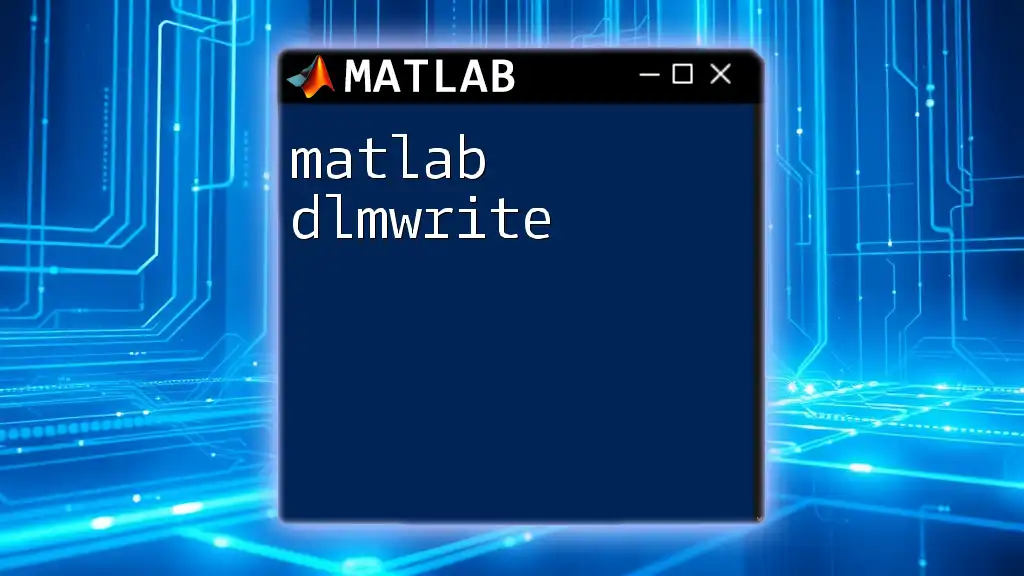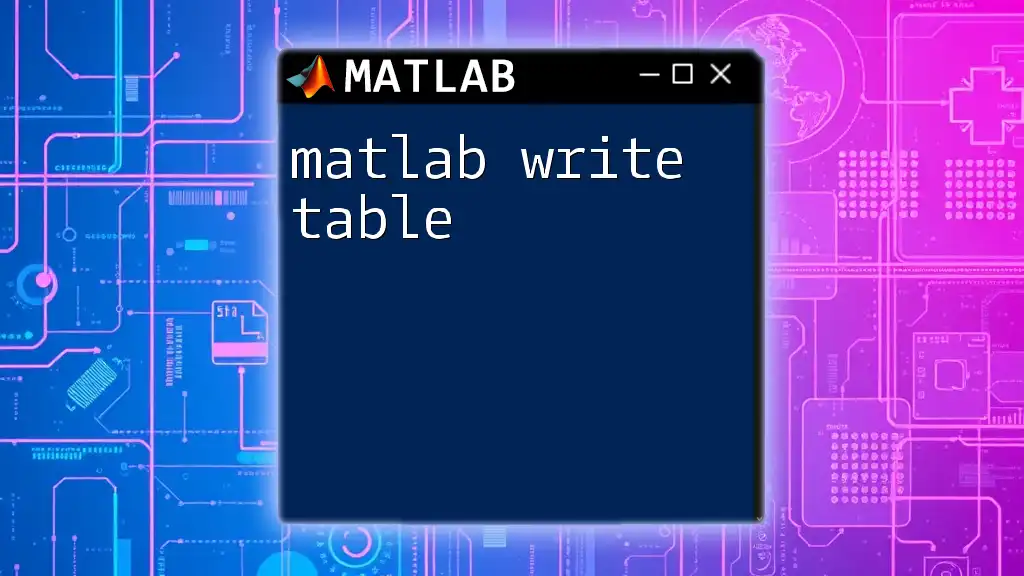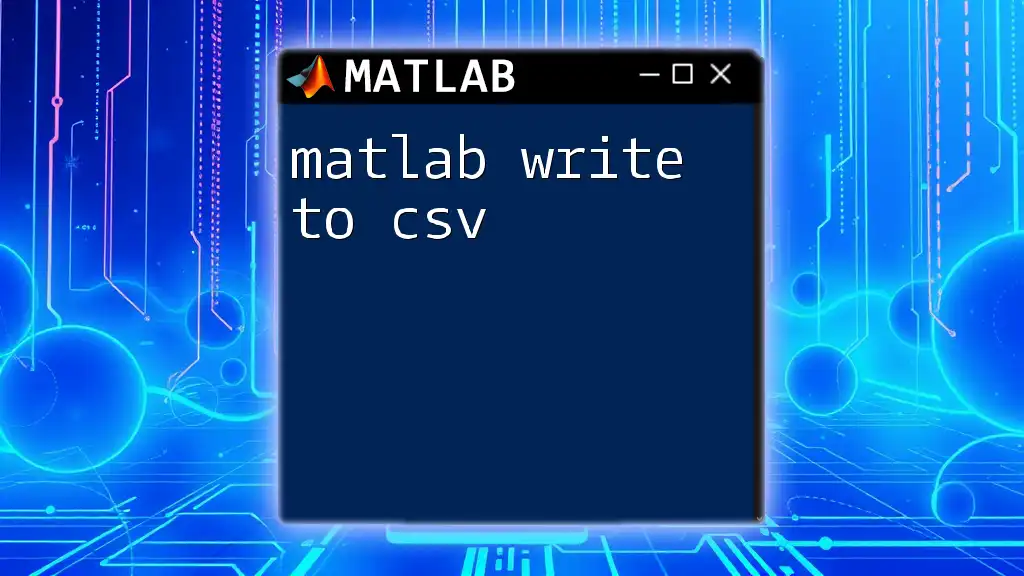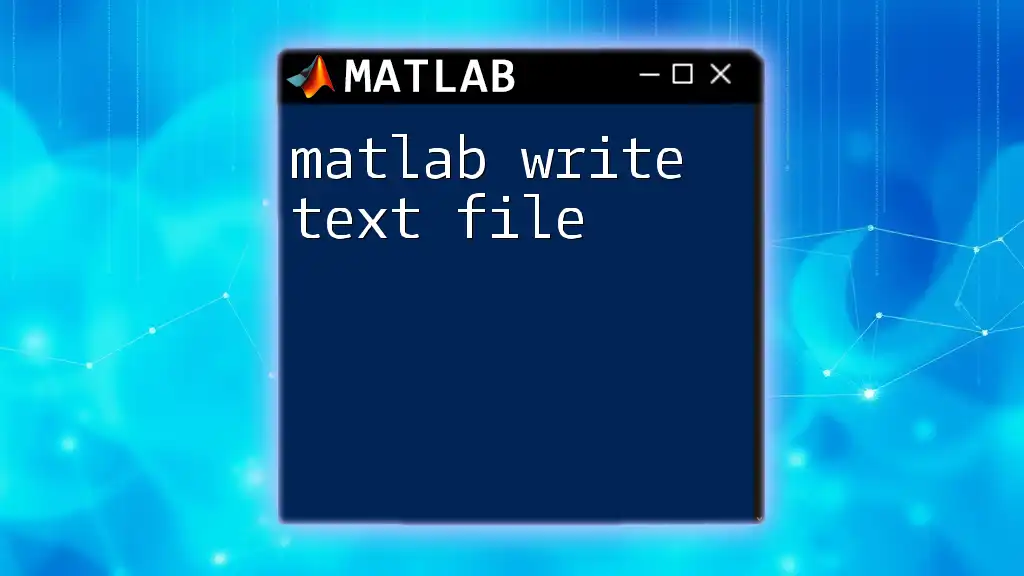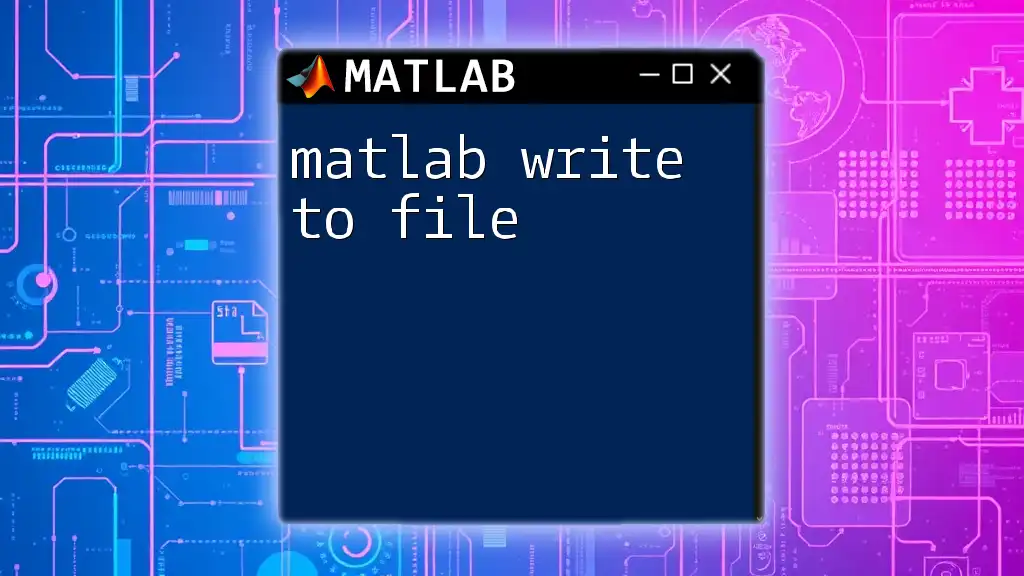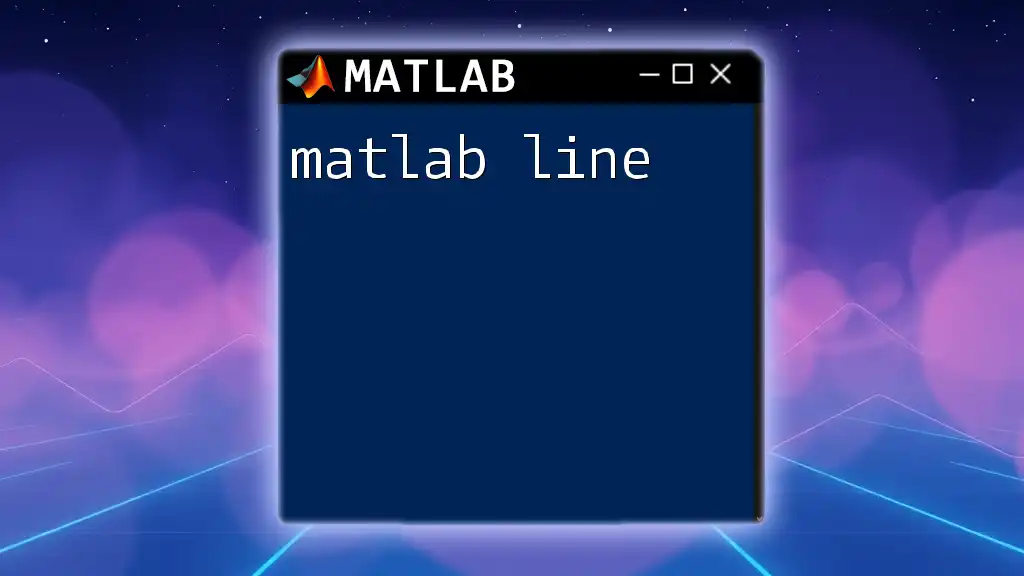The `dlmwrite` function in MATLAB is used to write data to a text file in a delimited format, allowing for easy export of numerical arrays.
dlmwrite('data.txt', A, 'delimiter', '\t');
What is `dlmwrite`?
Definition
The `dlmwrite` function in MATLAB is a powerful tool used to write data from matrices to text files. It allows users to export numeric data conveniently for various applications, such as data analysis, reporting, or integration with other software tools. By employing `dlmwrite`, users can efficiently manage data output, making it an essential function in any MATLAB user's toolkit.
Key Features
- Text File Writing: `dlmwrite` enables the writing of matrices and arrays directly to text files, which is crucial for data storage and sharing.
- Custom Delimiters: The function supports various delimiters, allowing users to define how values are separated in the output file. This flexibility caters to a range of applications, from CSV files to custom formats required by specific software.
- Formatting Options: Users can specify the format of the numbers being written, providing control over the appearance and precision of the data in the output files.

Syntax of `dlmwrite`
Basic Syntax
The basic syntax for the `dlmwrite` function is straightforward:
dlmwrite('filename', M)
Parameters Explained
- filename: This parameter specifies the name of the output file to which the data will be written. The filename should include the desired file extension.
- M: The matrix or array that contains the data you want to export. This is a mandatory parameter.
- delimiter: This optional parameter defines the character that separates values in your output file. Common choices include commas (`,`) for CSV formats and spaces for whitespace-separated files.
- precision: The precision parameter allows you to specify the format of the written numbers. This can be useful for controlling the number of digits after the decimal point.
- row and column: These optional parameters let you specify the starting position in the file from which the data will be written (row offset and column offset).
Example of Basic Syntax
Here's a simple example using the `dlmwrite` command:
dlmwrite('data.txt', matrix)
In this example, `matrix` is any valid numeric matrix in MATLAB, and it will be written to a file named `data.txt`.

How to Use `dlmwrite`
Simple Data Writing
A quick way to write a simple 2D matrix to a text file can be illustrated as follows:
data = [1, 2, 3; 4, 5, 6];
dlmwrite('simple_data.txt', data)
In this example, a 2x3 matrix named `data` is created and saved to `simple_data.txt`. The output file will contain:
1 2 3
4 5 6
Writing with Custom Delimiters
Using different delimiters can enhance the readability and utility of the data. For instance, if you want to save data in a CSV format, you can do this:
data = [1, 2, 3; 4, 5, 6];
dlmwrite('custom_data.csv', data, ',')
In this case, the data will be separated by commas, making it suitable for processing in spreadsheet applications like Excel. The resulting `custom_data.csv` would appear as:
1,2,3
4,5,6
Specifying Precision
You can control the precision of the data being saved by utilizing the precision parameter. Consider the following example:
data = [1.2345, 2.3456; 3.4567, 4.5678];
dlmwrite('precision_data.txt', data, ' ')
This command writes `data` to `precision_data.txt`, using a space as a delimiter. The output file will reflect numbers formatted to the default precision, depending on the MATLAB environment settings.
Writing at Specific Positions
The ability to write data starting from specific rows or columns is another important feature. It allows for more complex data management in files. Here’s how you can use positioning:
data = [7, 8, 9];
dlmwrite('positioned_data.txt', data, 'delimiter', ' ', 'roffset', 2, 'coffset', 1)
In this example, the `data` will start writing at the third row (due to the row offset of 2) and the second column (due to the column offset of 1) in the `positioned_data.txt` file.

Common Use Cases
Exporting Results from Simulations
One of the primary applications of `dlmwrite` is in exporting the results of simulations. After performing computations or simulations in MATLAB, you can use `dlmwrite` to quickly save the results for use in reports or further analysis.
Data Logging
During experiments or data collection processes, it may be beneficial to log results continuously. `dlmwrite` can assist researchers in saving data dynamically as it is generated, ensuring comprehensive data tracking throughout the experiment.
Integration with Other Applications
By saving data in text files using `dlmwrite`, users can easily integrate the outputs with other software applications. For example, CSV files created can be directly imported into Excel, R, or Python for further analysis or visualization, streamlining workflows across different platforms.
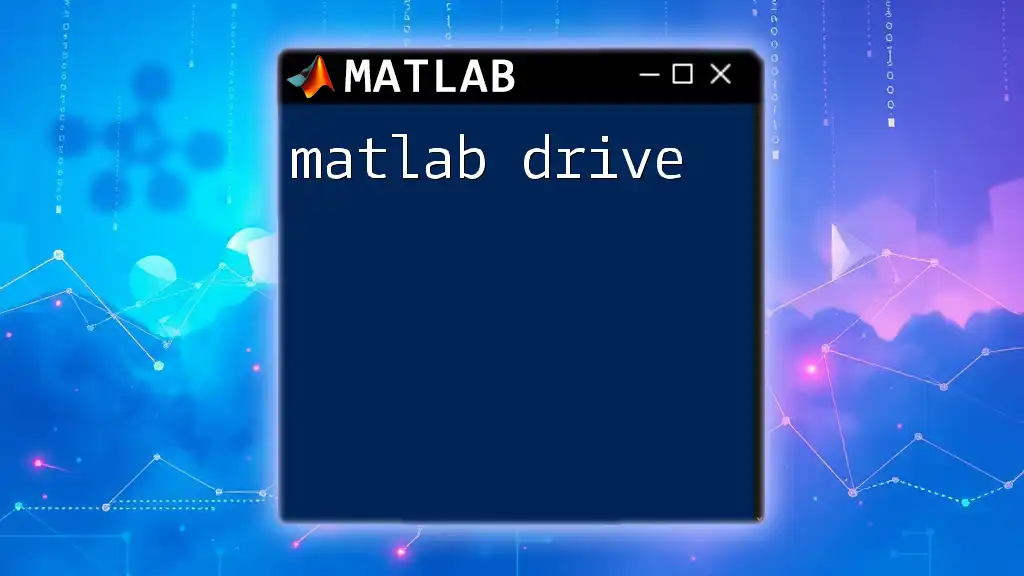
Limitations of `dlmwrite`
Data Type Restrictions
It is important to note that `dlmwrite` can only handle numeric data types. If you attempt to write a cell array or a structure that contains non-numeric data directly, you will encounter an error. Users must ensure that the data being exported is in a numeric matrix format.
File Size Considerations
While `dlmwrite` is efficient for moderate-sized matrices, there can be performance issues with very large datasets. When dealing with extensive data, it may be prudent to consider alternative methods or to break the data into smaller chunks.
Alternative Functions
For more complex requirements, it may be beneficial to look at alternatives like `writematrix` and `csvwrite`. Both offer enhanced functionality and may accommodate additional data types, although they might have their own syntax and usage guidelines.
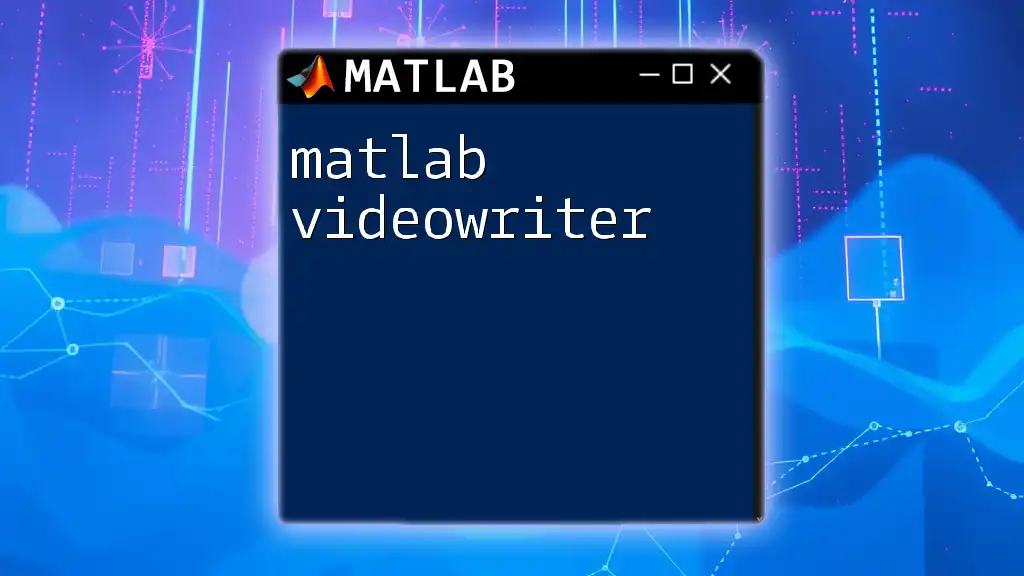
Conclusion
In summary, `matlab dlmwrite` stands as an essential function for exporting numeric data from MATLAB to text files. Its capabilities, such as customizable delimiters, precision formatting, and the ability to specify data writing positions, make it versatile and user-friendly. Users are encouraged to experiment with the various parameters of `dlmwrite` to maximize their data management efficiency.
By mastering `dlmwrite`, you can streamline your workflows and enhance the usability of your data for further analysis or reporting. Don't hesitate to delve into the official MATLAB documentation or explore community forums for additional support and insights.

